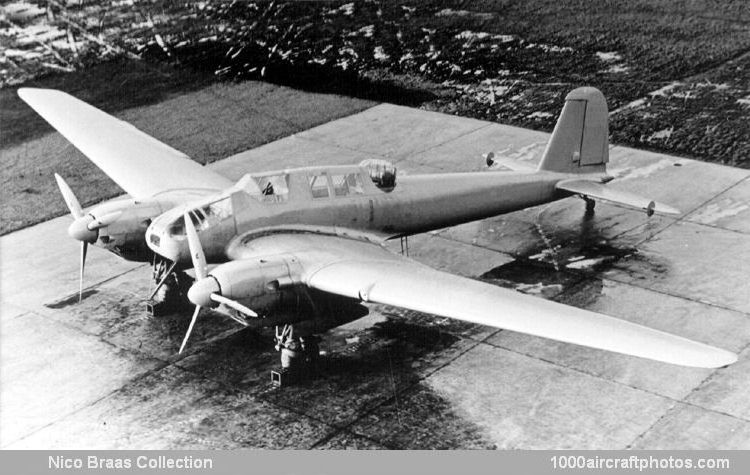12/15/2015. Remarks by
Johan Visschedijk: "The Fw 57 was Focke-Wulf's first venture into the field of all-metal stressed-skin construction. It was conceived in answer to an
RLM specification issued during the late autumn of 1934 which called for a long-range heavy fighter or Kampfzerstörer. The specification was issued to six companies; AGO, BFW, Dornier, Focke-Wulf, Gotha, Heinkel and Henschel. After an initial examination in December 1934, three of these projects were chosen for further evaluation, the BFW Bf 110, the Henschel Hs 124 and the Focke-Wulf Fw 57.
The largest of the three projects, the Fw 57 was designed by Dipl.Ing. Bansemir. It was a low-wing monoplane with a fully retractable tail wheel landing gear and provision for a crew of three; pilot, bomb-aimer and gunner. The cantilever wing was built in three sections with main and auxiliary spars. The fuselage was a circular monocoque structure with a fully glazed nose section and a stepped cockpit. An electrically operated Mauser dorsal turret was developed for the project, this being designed to carry a 20mm MG FF cannon. Two further MG FF cannon were to be mounted in the nose, operated by the bomb-aimer.
Two power plants were specified for the Kampfzerstörer projects, the Junkers Jumo 210 and the Daimier Benz DB 600, both twelve-cylinder liquid cooled in-lines. The Fw 57 employed two of the latter engines, each of which developed 910 hp for take off, and drove three-bladed variable-pitch metal airscrews.
The first prototype, the Fw 57 V1 made its initial flight in the late spring of 1936 with Flugkapitän Wolfgang Stein at the controls. No armament was installed in the aircraft, although it did carry a mockup of the Mauser gun turret. Trials showed that the Fw 57 V1 was seriously overweight, the wing structure alone weighing some five times the figure originally calculated!
At this stage, the RLM favored the Henschel Hs 124 of the three designs under consideration, but following the intervention of Ernst Udet, who considered the faster and lighter Bf 110 a much more promising proposition, a complete revision of the Kampfzerstörer specification was undertaken. The whole idea of a composite heavy fighter and light bomber was abandoned in favor of two separate aircraft; that of a Zerstörer or heavy fighter to which the Bf 110 was adapted, and that of a Schnellbomber or fast bomber to which the Ju 88 was eventually produced.
By this time the testing of the Fw 57 was purely academic. Apart from excessive structural weight, the Fw 57 also proved to have poor handling characteristics. Eventually the Fw 57 V1 was forced to make an emergency landing in soft ground and was written off. Two further prototypes, the Fw 57 V2 and V3 were completed and flown during the summer and autumn of 1936, but by then it was realized that the aircraft was a complete failure and it was abandoned. The two later prototypes differed from the first aircraft in having a taller rudder and revised control tabs for the rudder and elevators. Like the Fw 57 V1, both aircraft were unarmed."

